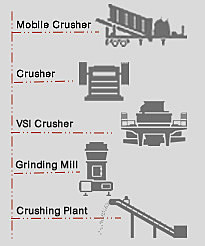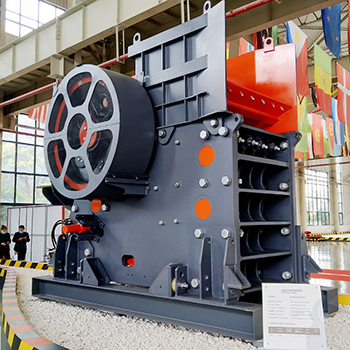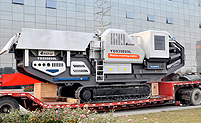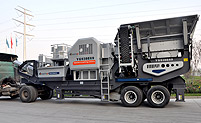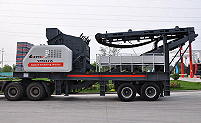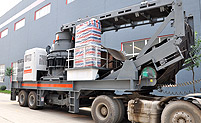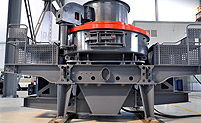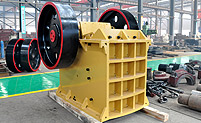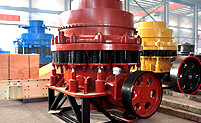Techniques for improving the grinding fineness of ball mill
First of all, the grinding cost is a relatively high part of the dressing plant. How to effectively and reasonably control the grinding fineness is an important factor to directly reduce the dressing cost and improve the economic benefits of the dressing plant. Because the grinding fineness is one of the many factors affecting the beneficiation index, the size of the grinding fineness directly affects the grade of the concentrate and the recovery rate of the product. Therefore, the technical operation of the ball mill is extremely important.
Let's talk about the factors that affect the grinding fineness. First of all, we must fully understand the influencing factors of the grinding fineness. To sum up, the factors that affect the grinding fineness are: raw ore hardness, crushing particle size, grid sieve hole, ore feed size, ball mill model, steel ball quantity, steel ball size ratio, ball mill liner wear, ball mill speed, classification Machine speed, classifier spindle lift height, classifier blade wear, classifier overflow weir height, classifier lower opening height, classifier lower opening size, classifier upper opening height, classifier upper opening size, sand return flow size, ball mill The size of the water supply, the size of the flushing water at the discharge port of the ball mill, etc.
In addition, let me talk about the problem of efficiency: the moisture of the materials entering the ball mill must be strictly controlled, but to ensure the normal operation of the mill, a small amount of water should be kept in the materials, otherwise the materials will be too dry and the flow speed in the mill will increase, which will cause damage to the ball mill. Grinding and coarsening occurs, which affects product quality. At the same time, a small amount of water is kept in the material, and part of the water heat can be taken away when gasification in the mill, which is good for reducing the grinding temperature and improving the grinding efficiency.
After understanding all these influencing factors, we need to search one by one in the production operation to find the best adjustment factors.
Raw ore hardness: Different ores have different hardness. This factor is fixed relative to the same ore and cannot be adjusted. However, in production, under the premise of the technical requirements of the beneficiation process, reasonable ore blending can be carried out to make the ore size uniform as much as possible, and the ratio of massive and powdery ore is reasonable and stable. In addition, at the mine feeding place of the ball mill belt, the belt may leak ore due to long-term wear, and most of the leaked ore is fine ore. This part of the leaked ore must be added to the ball mill in time as much as possible. Adding it will cause uneven ore feeding in the ball mill and cause unstable production. Especially for refractory minerals, the properties of powder minerals and bulk minerals are often different.
The lifting height of the main shaft of the classifier is also an important factor affecting the amount of sand returned and the fineness of grinding. Generally, normal production requires the main shaft of the grader to be put in place. Some ball mill workers in the ore dressing plant did not clean up the ore in the classifier after the equipment was overhauled. After a long time of sedimentation, the ore slime became solid. , resulting in less sand return than normal. In addition, if the main shaft is not put down, it may be because the main shaft has not been cleaned and oiled for a long time, so pay attention during the operation.
The adjustment of the crushing particle size and the sieve opening of the grid is the key construction. The ball miller must supervise the crushing system. If the particle size of the ball mill feeds changes during production, it must be reported to the crushing workshop immediately. Ultimately, the finer the crushing particle size, the better.
Classifier blade wear: After the blade is worn, the amount of sand returned will decrease, resulting in coarser grinding fineness. In addition, if the blade wears severely, it will affect the life of the classifier. Therefore, check the wear of the blade in time during work and replace it in time Worn blades. The speed of the ball mill, the speed of the classifier, and the distance between the impellers of the classifier: it is determined when the ball mill is purchased, and please check the consultation when purchasing.
The height of the overflow weir of the classifier affects the size of the ore sedimentation area. In production, we can properly adjust the height of the overflow weir of the classifier according to the requirements of the grinding fineness. If the grinding fineness is required to be finer, it can be adjusted in Angle irons of a certain height are welded on both sides of the classifier, and the height of the overflow weir of the classifier is adjusted by inserting a wooden wrench. Sometimes, the height of the overflow weir can be naturally increased after long-term accumulation of ore slime.
The height of the lower opening of the classifier, the size of the lower opening of the classifier, the height of the upper opening of the classifier, and the size of the upper opening of the classifier are made on site during the equipment installation. In many processing plants, because the size of the classifier opening has not been adjusted during the equipment installation, And the workers don't pay much attention during the operation, which also affects the grinding operation invisibly. The lower opening of the classifier is relatively large, and the ore sedimentation area is relatively large, so the amount of sand returning will be large, and the grinding fineness is relatively fine. Larger, the grinding fineness is relatively fine, the upper opening of the classifier is low, the sand return volume is relatively large, the grinding fineness is relatively finer, the upper opening of the classifier is large, the relative sand return volume is relatively large, and the grinding fineness is relatively finer. Otherwise do the opposite. the
First of all, we have to assume that other influencing factors are normal. The principle is: in the case of a certain grinding fineness, we should maximize the processing capacity, which can effectively improve production efficiency. (Most ores, except special minerals) Relatively speaking, the finer the grinding fineness, the more fully the dissociation of useful minerals and gangue minerals is, which is beneficial to improving the recovery rate of metals. Therefore, under the condition of a certain amount of ore to be processed , improve the grinding fineness as much as possible. In addition, ore grinding is the first link in the beneficiation process. In order to ensure the stability of production, the ore grinding should be as stable as possible. the
In the case of a certain amount of ore feeding, the size of the flushing water at the ore discharge port and the amount of ore feeding directly affect the fineness of the grinding. In many mines in China, the grinding automation has not been realized, and the amount of water is directly determined by the ball mill. Manual adjustment, because the water flow at these two places is relatively large, it is difficult to see the increase and decrease, so careful observation and fine adjustment are required. First of all, we understand that when the water supply of the ball mill increases, the grinding concentration becomes thinner, and the grinding fineness becomes coarser. On the contrary, when the water supply of the ball mill decreases, the grinding concentration increases, and the grinding fineness becomes finer. The flushing water at the ore outlet of the ball mill becomes larger, the overflow becomes thinner, and the fineness of the overflow becomes finer. On the contrary, the flushing water at the ore outlet of the ball mill becomes smaller, the overflow becomes thicker, and the fineness of the overflow becomes thicker. Therefore, under other conditions including the same amount of ore, to increase the grinding fineness, the water supply to the ball mill can be reduced, and the flushing water at the discharge port of the ball mill can be increased. It is best to adjust these two conditions at the same time to ensure as much as possible Reduce the fluctuation of flotation due to the change of the amount of pulp caused by the adjustment of the grinding fineness. In many concentrators, due to the operation of the ball mill, the amount of ore pulp changes greatly, resulting in the instability of the flotation liquid level. If the flotation workers do not deal with it in time, the metal recovery rate and grade change. The opposite is true if the grinding fineness is coarsened.
On the premise of ensuring the grinding fineness, the ore feeding capacity of the ball mill can be increased. The amount of ore to be fed should meet the requirement of grinding fineness and at the same time, the ball mill will not bulge. The whole process must carry out the subtle operation of each link. Therefore, paying attention to details is the key. It is not only a ball mill to improve the grinding fineness, but also needs to be related to every detail of the entire process and production line.
NEXT: Expert analysis: the use and maintenance of vibrating screening filter

